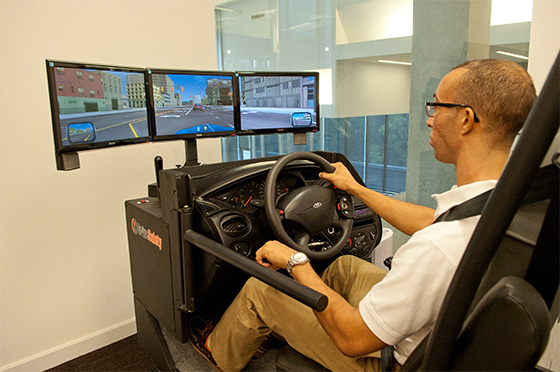
GENERAL THERAPY
DriveSafety simulators feature the acclaimed SimClinic® library of clinical activities that support progressive functional exercises targeting a client’s underlying sensory, cognitive and/or motor abilities that are required for not only driving, but also for many other essential activities of daily living. Such evaluations and interventions are aligned with many countries’ occupational and/or physical therapy and rehabilitation codes, and may facilitate reimbursement for health care services delivered.
1. SENSORY
Sensory-related functions that can be exercised and measured using these interactive tools include visual perception and information processing, visual-motor integration, visual fields, and proprioception.
2. COGNITIVE
DriveSafety simulators provide unique tools for evaluating as well as for practicing and strengthening cognitive skills such as divided and selective attention, working memory, problem solving and anticipatory thinking.
3. MOTOR
Therapists also use DriveSafety simulators to assess and help rehabilitate clients’ motor function. Interactive exercises and driving scenarios target clients’ physical strength, reaction time, control, endurance, and neuromuscular reeducation of movement and coordination.

